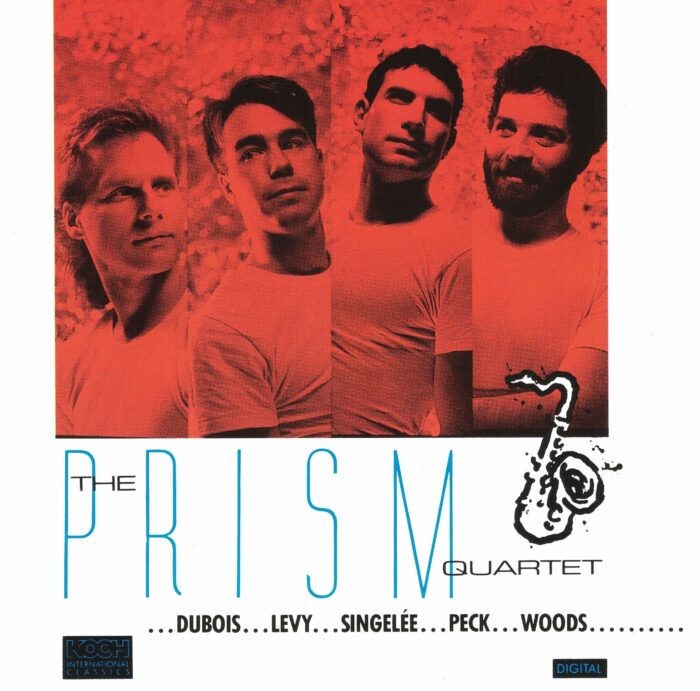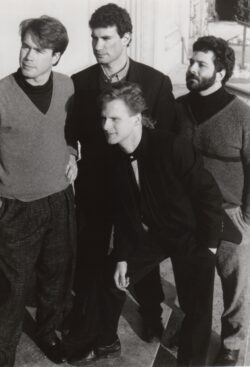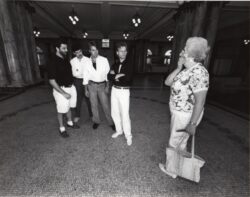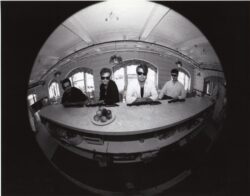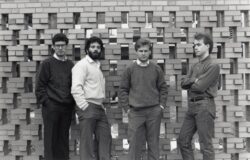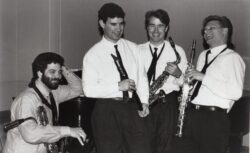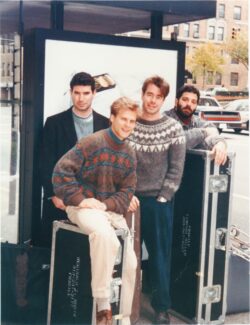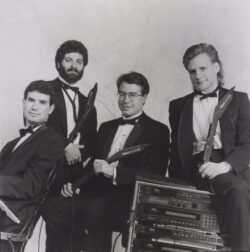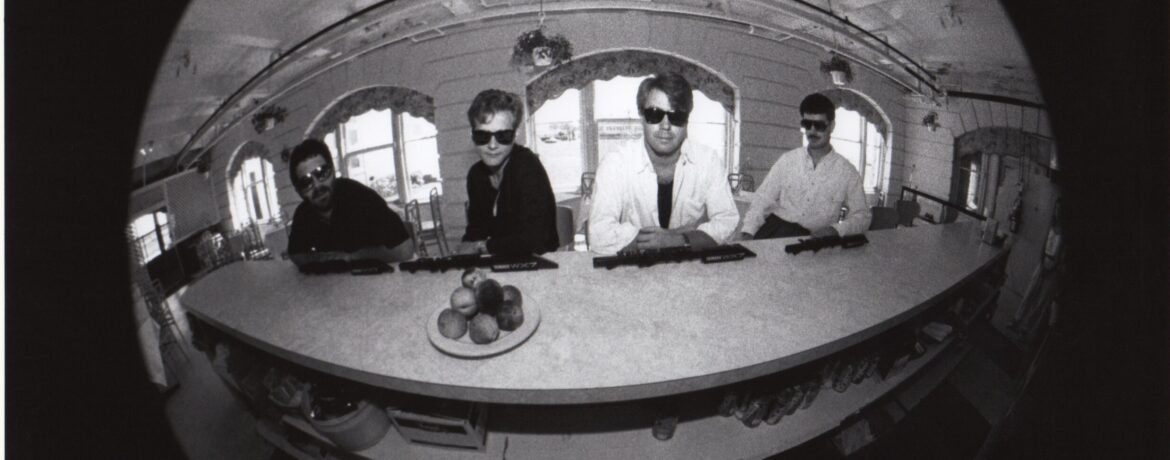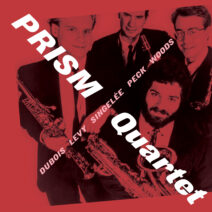Read the original liner notes by Charles Passy
If instruments could talk, then the saxophone would be a regular Rodney Dangerfield, making, “I don’t get no respect” its musical motto. Few members of the orchestral family have been hold in such casual regards as the conical-shaped single-reed brass instrument the Belgian-born craftsman Adolphe Sax (1814-1894) patented in 1846, And while Sax’ invention is widely accepted today in jazz and popular music, where its rich tonal palette and rhythmic flexibility are treasured by musicians and audiences alike, it remains something of an enigma to the classical community, ironically the very source of its creation.
Admittedly, that creation came almost by accident. The son of a prestigious brass and wind-instrument manufacturer, Sax was simply trying to improve upon the established design for the clarinet when he devised the saxophone, therein filling a crucial void that had long existed in ensembles between brass and winds. His invention was immediately hailed by the circle of musicians with whom he was associated in France, where he had permanently relocated in 1842. As significant a figure as Berlioz surmised in his treatise on Modern Instrumentation and Orchestras:
There instruments, newly added to the orchestra, have rare and excellent qualities. They are gentle and yet penetrating in their high notes, full and solid in their depth and most expressive in their middle register; altogether a most uncommon sounds, in a certain measure like the sounds of the violin-cello, the clarinet and the English horn, with a certain half-metallic mixture which somehow lends it an unusual charm. Lively and just as suitable for quick passages as for lovely melodious ones and for religious and dreamlike harmony effect, the saxophone is of great value to every kind of music, but especially in slow, dreamy pieces. Clever composers will in time produce marvelous effect by uniting it with the family of clarinets of by different combinations.
And true to his word, Berlioz was among the first classical composers to experiment with the saxophone, along with such giants of the French opera as Meyerbeer, Bizet and Massenet. But the real testing ground of the saxophones proved to be the military band, and it’s therefor little wonder that Sax’ instrument was so treasured by the French royalty.
In the 20th century, the saxophone continued to find a home in ensembles of a military or scholastic nature, while schools of classical –trained French and American virtuosos helped guarantee it a small but significant place in the concert hall. But in his wildest dreams, Adolphe Sax would not “have imagined the popularity that was to come to his invention…through the commercialization of Afro-American jazz,” according to Philip Bate in the New Grove Dictionary of Music and Musicians. For that, Sax could thanks the band-leaders of Chicago in the 1920s, who incorporated the saxophone in the ensembles they forms, thereby breaking with the traditions of New Orleans jazz and paving the way for such saxophone greats as Charlie Parker, Coleman Hawkins, Lester young, and John Coltrane.
If there’s a force in the saxophone’s colorful history that ties together its many musical strands, it’s the saxophone quartet, that unique blending of soprano, alto, tenor and baritone saxophones in chamber-like idiom. As the repertoire on this debut recording of the Prism Saxophone Quartet testifies, this instrumental combination has been around nearly as long as the instrument itself. And by building on the saxophone’s classical origins while playing attention to its popular appear, Prism seeks to establish a new saxophone tradition, and in doing so, bring the saxophone the serious attention, the “respect,” it has long deserved.
An accomplished violinist, composer and conductor in his native Belgium, Jean Baptiste Singelée (1812-1875) is credited with writing the first saxophone quartet ever. His Premiere Quatour dates some 11 years after Sax’ patent of 1846 and is conceived in the traditional quartet format as defined by Haydn. Its four movement respectively pay homage to four renowned composer of the time. Rossini, Beethoven, Mendelssohn and Meyerbeer. The quartet also establishes the subtle timbral differences among the four members of the saxophone family.
After Singelée, there are precious few examples of 19th-century saxophone quartets. But the establishment of a brilliant school of French saxophone players in the 20th century led several French composers to tackle the curious genre. Among them was Pierre Max Dubois (b.1930), a Paris-Conservatoire-trained composer with several prizes and commissions to his credit. As befitting this elegant, virtuoso French saxophone school, Dubois’ Quatour is a pure saxophone showpiece, its language recalling the witty, genteel manner of Milhaud and Poulenc, though one may hear shades of Rimsky-Korsakov’s Flight of the Bumble Bee in the frenetic fourth movement.
But if French classically-trained saxophonists and composers draw their inspiration from the instrument’s playful appeal, then Americans make their muse its jazzy seductiveness, as evidenced by the work of Phil Woods (b1931) and Russell Peck (b.1945). Acclaimed as the finest alto saxophonist in mainstream jazz, Woods also release his Juilliard training in his Three Improvisations for Sax Quartet, which unite different jazz styles in a contemporary classical idiom. Woods’ title, however, might be misleading: Despite their seemingly loose structure, the three improvisation are indeed through–composed.
Peck, on the other hand, has little background in jazz, yet his Drastic Measures expresses not only his deep appreciation for the American art, but also for such other popular musical forms as ragtime, blues and rock ‘n’ roll. The one-time composer-in-residence of the Indianapolis Symphony described the two-movement work as being “informed by American musical experience: as it moves from moments of high melodrama to utter burlesque. The work also incorporates various performance techniques common to the jazz saxophone, including wiles “falls,” percussive “slap-tonguing,” and even “growling.”
Even with the repertoire riches discussed above, the saxophone quartet lags far behind such ensembles as the string quartet and brass quintet in the number of works composer for it. Prism, however, has its own solution in the form of its two resident composers, soprano saxophonist Reginald Borik and tenor Matthew levy (b.1963), the latter represented by three works on this recording. And like Woods and Peck’s Levy’s work blends elements of jazz and classical, or as the one-time University of Michigan student so aptly put it, “I grew up in the late 70s listening to groups like Earth, Wind, and Fire and the Commodores,. What else would you expect from my music?” But one doubt if even the most accomplished pop group could express the same level of musical sophistication as does Levy in the contrapuntally constructed Quartet, the poignant Lament (a tribute to his late father, the painter Julian Levy) and the bluesy showpiece Tenor Indigo (the title a nod to Duke Ellington’s Mood Indigo).
Where does the saxophone quartet go from here? The answer may well be that it goes electronic. In addition to perming as a traditional saxophone ensemble, the Prism Quartet has also showcased the newest members of the wind family: the Yamaha Wx-11 Wind Controller, most commonly known as the M.I.D.I (Music instrument Digital Interface) Stick. By enabling wind instruments to access the sonic technology of synthesizers, the M.I.D.I. stick can turn your typical saxophone quartet into almost any imaginable chamber ensemble, from a rock band to a boys choir, as future Prism recordings will no doubt reveal. Roll over Adolphe Sax, indeed!
Charles Passy is the editor of Classical magazine.
